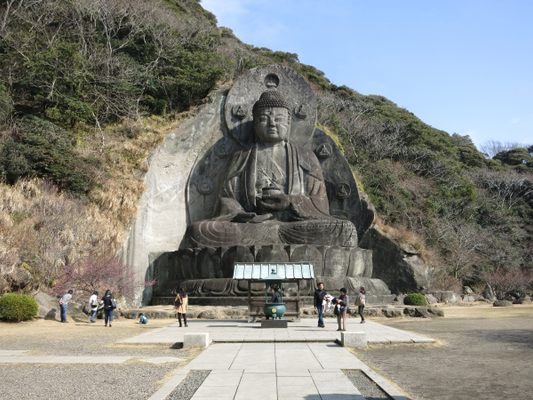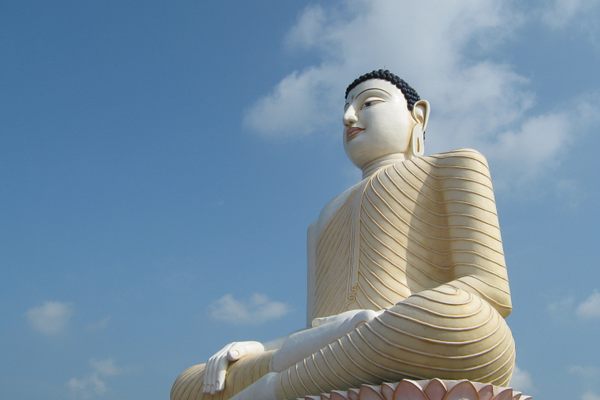About
There are many daibutsu, or Great Buddha statues, across Japan. While the ones in Kamakura and Nara are more famous and popular, it is impossible to deny that the Great Buddha of Nihon-ji Temple is a unique one.
Standing (or, more accurately, sitting) over 30 meters tall, this daibutsu is the largest stone-cut effigy of Buddha in Japan. It depicts Yakushi Nyorai, the Buddha of Healing, also known as Bhaisajyaguru in Sanskrit.
It was carved out of Bōshū-ishi, tuffaceous sandstone that is exclusively quarried from Mount Nokogiri, on which Nihon-ji Temple is built. It is also the material used to build Tateishi-sama, strange stone that was worshipped as a local deity in Tokyo.
The original Buddha was created in 1783 by Ōno Jingorō Eirei with the help of 27 of his apprentices. It stood 37.7 meters tall then, but the rain and wind eroded the rock sculpture, to the point that it had been all but destroyed by the mid-19th century. It underwent restoration work in 1966, which was completed in 1969. As it had to steer clear of the remains of the ruined Buddha, but be made in its place, the new sculpture was made smaller than the original.
Nihon-ji Temple itself dates back to 725, when it was founded by Nara-period priest Gyōki. There are said to be over 1,500 stone statues in this temple, including the Great Buddha and the Hyaku-shaku Kannon, 30-meter-tall rock sculpture of the Buddhist goddess of mercy. Its grounds extend to the entirety of Mount Nokogiri.
Related Tags
Community Contributors
Added By
Published
December 17, 2009




























